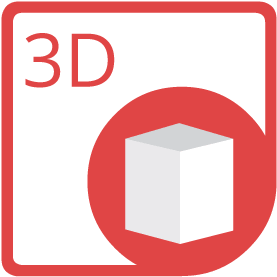
Convert OBJ to HTML via Java
OBJ to HTML conversion using Java library without any 3D modeling software.
How to Convert OBJ to HTML Using Java
In order to render OBJ to HTML, we’ll use
API which is a feature-rich, powerful and easy to use conversion API for Java platform. You can download its latest version directly from
and install it within your Maven-based project by adding the following configurations to the pom.xml.
Repository
<repository>
<id>AsposeJavaAPI</id>
<name>Aspose Java API</name>
<url>https://repository.aspose.com/repo/</url>
</repository>
Dependency
<dependency>
<groupId>com.aspose</groupId>
<artifactId>aspose-3d</artifactId>
<version>version of aspose-3d API</version>
<classifier>jdk17</classifier>
</dependency>
Steps to Convert OBJ to HTML via Java
Java programmers can easily convert OBJ file to HTML in just a few lines of code.
- Load OBJ file via the constructor of Scene class
- Create an instance of HtmlSaveOptions
- Set HTML specific properties for advanced conversion
- Call Scene.save method
- Pass the output path with HTML file extension & object of HtmlSaveOptions
System Requirements
Before running the Java conversion code, make sure that you have the following prerequisites.
- Microsoft Windows or a compatible OS with Java Runtime Environment for JSP/JSF Application and Desktop Applications.
- Get latest version of Aspose.3D for Java directly from Maven.
Java 3D Scene Manipulation Library
Aspose.3D is a CAD and Gameware API to load, modify and convert 3D files. API is a standalone and does not require any any 3D modeling or rendering software. One can easily use API for Discreet3DS, WavefrontOBJ, STL (ASCII, Binary), Universal3D, FBX (ASCII, Binary), Collada, glTF, PLY, GLB, DirectX and more formats.OBJ What is OBJ File Format?
OBJ files are used by Wavefront's Advanced Visualizer application to define and store the geometric objects. Backward and forward transmission of geometric data is made possible through OBJ files. Both polygonal geometry like points, lines, texture vertices, faces and free-form geometry (curves and surfaces) are supported by OBJ format. This format does not support animation or information related to light and position of scenes. An OBJ file is usually an end product of the 3D modeling process generated by a CAD (Computer Aided Design). The default order to store vertices is counter-clockwise avoiding explicit declaration of face normals. Though OBJ files declare scale information in a comment line yet no units have been declared for OBJ coordinates.
Read MoreHTML What is HTML File Format?
HTML (Hyper Text Markup Language) is the extension for web pages created for display in browsers. Known as language of the web, HTML has evolved with requirements of new information requirements to be displayed as part of web pages. The latest variant is known as HTML 5 that gives a lot of flexibility for working with the language. HTML pages are either received from server, where these are hosted, or can be loaded from local system as well. Each HTML page is made up of HTML elements such as forms, text, images, animations, links, etc. These elements are represented by tags such as img, a, p and several others where each tag has start and end. It can also embed applications written in scripting languages such as JavaScript and Style Sheets (CSS) for overall layout representation.
Read MoreOther Supported Conversions
You can also convert OBJ into many other file formats including few listed below.